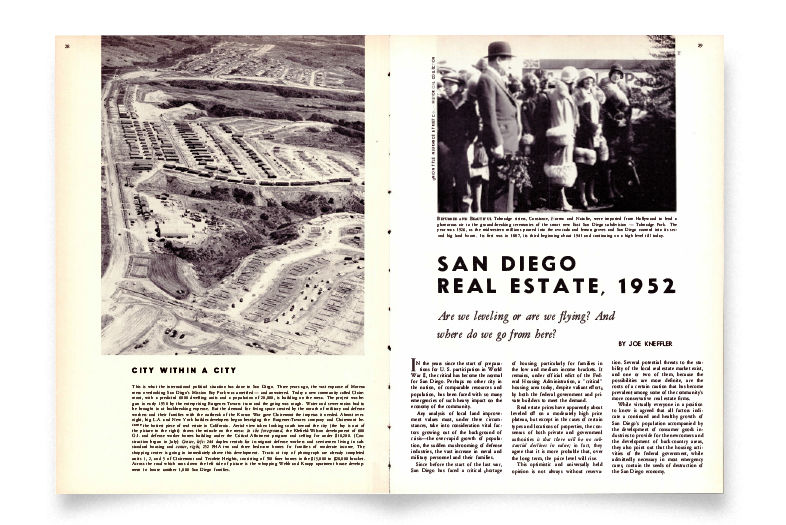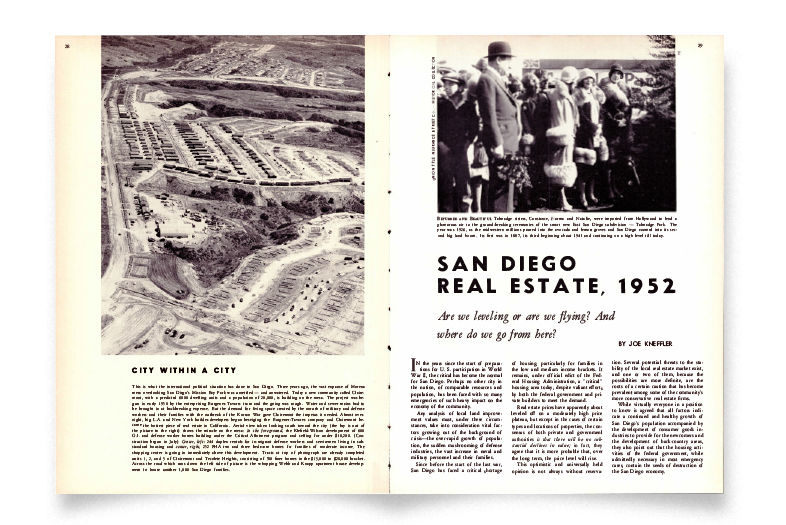When we published this Real Estate issue in August 1952, the US was in the middle of the Korean War. At home in San Diego, we were experiencing a housing shortage, thanks to World War II creating an “over-rapid growth of population, the sudden mushrooming of defense industries, [and] the vast increase in naval and military personnel and their families.” And despite the “valiant” efforts of the government and private developers to create more housing, we continued to fall short on low- and medium-income housing inventory.
Because the war kept our Navy busy and defense industry workers employed from 1950 to 1953, there was plenty of need for more houses. We reported that Clairemont had become “the hottest piece of real estate in California.” Developers descended on the formerly unsettled Morena mesa, building 6,000 dwellings for a projected 20,000 people. (Homes were selling from $10,000 to $20,000.)
One of the major concerns about building so many new homes so rapidly, not just in Clairemont but across the county, was what would happen to the market if and when military jobs dried up. Were we really equipped to support such rapid growth? Easterners were “inclined to discount San Diego’s Big Three—the Navy, an Aircraft Industry, dependent on government orders, and the Climate (read Tourists) as rather flimsy foundations for a great city’s economy.” Never mind that we were a beautiful port city with a big tuna fishing and canning industry (more on that in A Deep Dive into the San Diego Fishing Industry). Then-County Assessor Crowell Eddy pointed out that most of the new homeowners had first discovered San Diego as servicemen or defense workers but were not currently dependent on the Navy for employment. “They returned to their homes in the south, the east and the Midwest after the war, arranged their finances satisfactorily, and now they are moving here.”
And kept moving here they did. From 1920 to 1950, we reported, the assessed valuation of San Diego real estate went from just below $100 million to $450 million. The increase in value was more than double the national average for major cities. The big expense for the 1952 buyer was in building costs—there was a huge demand for materials and construction workers—as opposed to today, when the general sentiment is that what you’re paying for is the land. You could live out of a shipping container today if you wanted, but what land is there left to put it on? Ewart Goodwin, head of a local real estate firm, put it best at the time: “There is no point in moaning in 1952 about the fact that you could build a nice house for $5,000 in 1920.”
A similar statement could be made today. One thing remains true: San Diego’s “climate is world famed; its beaches, mountains, golf courses and other sport and pleasure facilities make it possible for the humblest San Diegan to live like a Pittsburgh millionaire.”

From the Archives: San Diego’s Real Estate Market in 1952

















